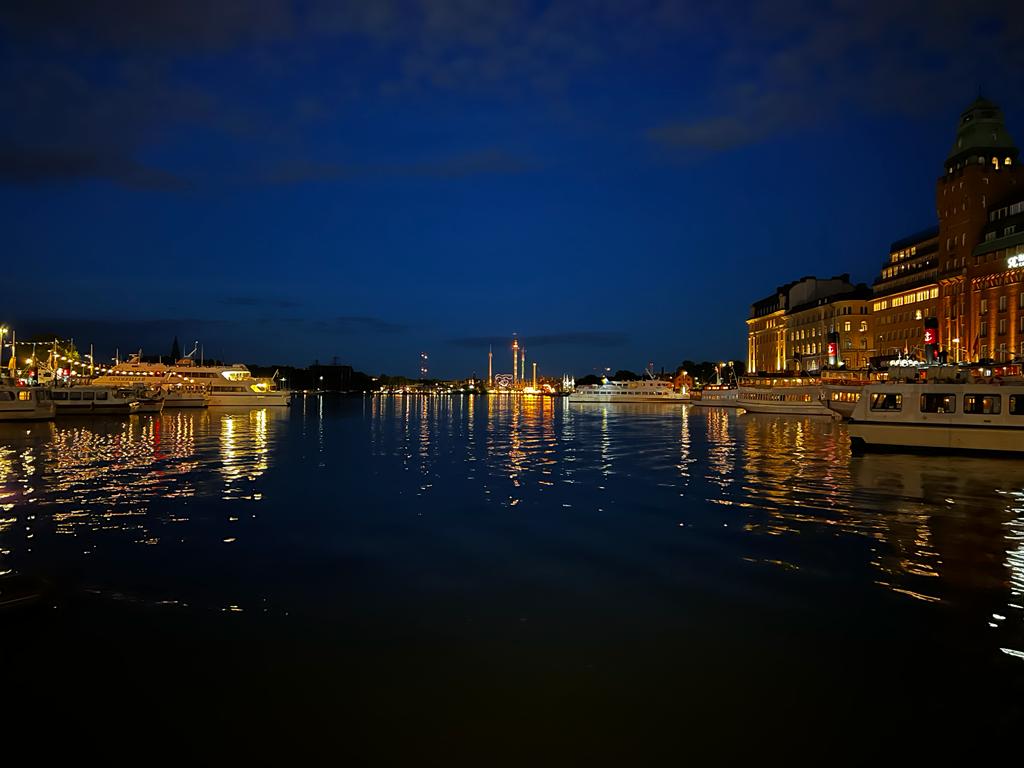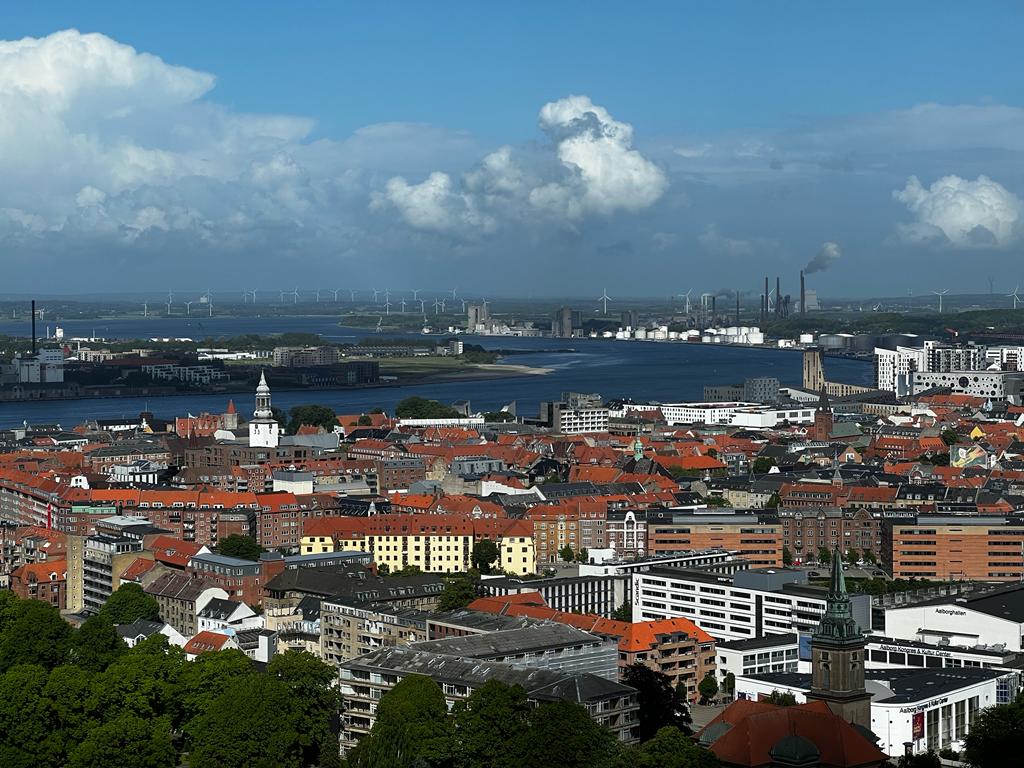Hello there! I’m Vineet Gala - somewhere between a thirdie and a fourthie as I write this. I am pursuing BTech in EE with (double) minors in Computer Science and Data Science. In the summer of 2022, I had the opportunity of traveling to Aalborg, Denmark, for a research internship I did at the Connectivity Section, Department of Electronic Systems, Aalborg University (AAU). Here is a spiel of my internship (and travel) experience.
Pre-Interview:
The biggest question I asked myself at the beginning of the internship season was if I wanted to do a university internship or go for a traditional (company) internship. Some background - I had previously done an internship in Philips Innovation Campus, which was around medical image processing; I had been a part of the student satellite program in the communication subsystem for 1.5+ years. I had not done any electives apart from the minor courses, and I was interested in communication, signal and image processing, ML, statistics, and computer science. I had pretty much decided on pursuing further studies (MS or Ph.D.) after my BTech. So, the potential pros (which I thought at the time of choosing) that a university research internship had for me were: research experience, letter(s) of recommendation, the possible publication(s), and the opportunity to travel abroad :). The cons were that it generally pays less (pretty much the cost of living), no chance for a PPO, lesser “industry experience,” and a chance that one of the pros might not come to pass.
Nevertheless, I chose to pursue a univ internship*. I also applied to 4 companies on day 1- some big companies with interesting roles that were of my interest. I reached the final interview rounds for 2 of them, but I don’t know what went wrong with both of them since I didn’t get selected for either. I felt a little dejected because there wasn’t anything particularly bad in my interview performance. Nevertheless, I hadn’t prepared hard for these, and I planned to go for a univ internship.
Now was the more challenging part: I had to wait since univ internship IAFs start coming in around mid-October, and various internship programs also have deadlines from September to December. I had not applied for MITACS or DAAD Wise programs. I wanted to apply to the Summer@EPFL, RISS, and SURF@Caltech programs. Apart from that, I also started writing to profs in September. I began with profs from the top universities - where I got no positive replies from. I was also waiting for univ internship IAFs via the PT-Cell. The first one came from Prof. Petar Popovski of AAU, which mentioned the active projects that his research group was working on. I liked most of them, and I went for it. I revised my projects and concepts and did some homework on the work done by the lab.
Selection and post-selection:
There was only a shortlist (based on resumé), an interview taken by Prof. Petar, and two more associate profs/post-docs. The significant factors for resume shortlisting were academic performance (CPI) and research experience (projects/publications). The shortlisted candidates mainly consisted of people trying to get a univ internship, probably because many students had already secured an internship elsewhere. My interview was scheduled for 20 minutes, but it went very smoothly and concluded positively in about 12 minutes. It started with the interviewers directly going for projects from my resume, which overlapped with their research topics. (I think) I managed to give answers they liked, and after a few questions, they told me I would get a topic based on my profile and interests. I chose to do something around satellites.
Coincidentally, a couple of days after my interview, I got another internship at a company for the winter break. In the spring semester, I took some electives around the work I would be doing during the summer. I asked the AAU professors for some resources to allow me to prepare some background for the internship. Besides academic preparation, I also had to prepare for other things - visa, tickets, accommodation, etc. The university administration contacted me around the end of January. There is a very elaborate visa application process involving multiple steps - first, the university has to file a visa application. Then, I must complete my part of the application, go to a nearby visa application center, and submit all documents and biometrics. It took two months for my visa and work permit to arrive, and it was issued only for the period I worked at AAU. Apart from this, I and my co-intern had to arrange our accommodation. Facebook groups are a good place for getting accommodation for students. The university administration also provides some help in finding accommodation. Also, since I had a visa for a country in Europe, I could’ve traveled to any European country. I visited Skagen, Grenen, Copenhagen, and Stockholm on weekends.

Internship:
I arrived at Aalborg in mid-May. Since it is very north, the summer was pretty cool for me, ranging from 7 to 25 degrees C. The sun was up for 18 hours, with the sky lit for over 20 hours. There were far fewer people than I was used to (Mumbai). Aalborg is a rather old town, so the city center, where I was staying, had buildings with typical European architecture, along with a beautiful river and waterfront passing through the center. It isn’t the most accessible place to make friends since the Danish people are very reserved and have small and close social circles. So most of the people I knew were from the section or some festival/event. There is also a very popular street famous for being filled with restaurants and pubs, which gives an excellent opportunity to make friends, socialize and experience the culture. The primary language used was Danish, but everyone knew English and would quickly switch to English when they understood that you didn’t speak Danish. Even the supermarkets etc., had information written in Danish, but I had all the translation applications to help me. Traveling around was slightly different because the university was about 5.5 km from my apartment. Most other places are walkable. There are buses for traveling around, but I use a bicycle. Many people use bikes, so the roads and the infrastructure are designed keeping this in mind. Taxis are costly. Eating outside every day can be expensive. Other viable options include cooking at home or using frozen meals.
About the work, I was introduced to the satellite group in the connectivity section, where I was introduced to the problem statement, which was to explore and assess resource allocation (OFDMA) and handover methods for low earth orbit (LEO) satellite constellations (such as Starlink). For this, I worked with Prof. Israel Leyva Mayorga and Prof. Federico Chiariotti, both associate professors at AAU. I started by reading some existing literature and formulating it as a combinatorial optimization problem to allot resource units and satellites to fixed cells on Earth, to maximize the minimum data rate experienced by any user on Earth served by the constellation. The problem proved to be NP-hard. I studied matching theory for this and some standard problems and algorithms such as the generalized assignment problem, deferred acceptance algorithm, etc. I also wrote a full python script to simulate a satellite constellation and the Earth with the user distribution. I proposed some heuristic algorithms and compared them to a standard distance-based allocation. Almost every day, I would update either of my two professors about my progress that day and consult one or both of them about formalizing/simulating any new ideas I had. There used to be a satellite group meeting and a full connectivity section meeting fortnightly. The work timings and attendance weren’t strict, but the lab environment was too good for me to consider working from home. I stayed in the lab from about 9-5 every day until a productive day. But there is no limit to it since one can stay for as long as they want — weekdays or weekends. As long as one made progress and attended scheduled meetings, I think the timings and days were pretty flexible.

Apart from this, there were some more profs, post-docs, Ph.D. students, and guest Ph.D./masters students in the section. Most of them had come from foreign lands (Italy, Spain, Brazil, Mexico, China, Japan, Vietnam, Turkey, Nepal, and Ukraine). Interacting with them and learning about their life and work was fascinating. I did make some good connections there, which I hope to keep for a while. I did not face many challenges except when I dropped my laptop bag and broke my laptop. But the lab was generous enough to lend me a spare laptop for my work. Apart from this, the two professors I worked with were very supportive, helpful, and approachable, removing most of the challenges I would have faced otherwise. Since my profs and the satellite group (and I) are keen on publishing the work at a conference/journal, I will continue working on it for some more time (virtually).
All in all, this experience has surpassed my expectations in all ways — output and otherwise. It has been my first time staying alone in a different country, my first offline research exposure, possibly my first publication, and countless learnings academically and otherwise. I would recommend 9.5/10